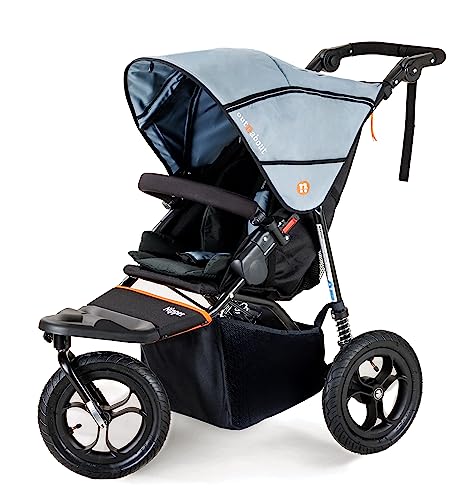This company has no active jobs
5 People You Should Be Getting To Know In The Prams Industry
Prams and Pushchairs: A Comprehensive Guide for New Parents
Navigating the world of baby transport can be overwhelming for new parents, particularly when it pertains to picking between top prams and pushchairs. Each choice offers distinct advantages and limitations, indicating that making a notified decision is crucial. This article aims to provide a comprehensive understanding of prams and pushchairs, their differences, functions to think about, and pointers for picking the best one.
Comprehending the Basics: Prams vs. Pushchairs
Prams and pushchairs are terms often used interchangeably, however they refer to different kinds of baby transportation systems.

Definitions:
- Prams: Traditionally designed for newborns and infants, prams have a large, totally flat bassinet that permits optimum convenience and security during early phases of a child's life.
- Pushchairs: Designed for older babies and young children, pushchairs usually have an upright seat that appropriates for kids who can support their head and neck. They typically feature adjustable recline options.
Key Differences
| Function | Pram | Pushchair |
|---|---|---|
| Style | Flat bassinet | Upright seat |
| Age Suitability | Newborn to around 6 months | 6 months to 4 years |
| Portability | Generally much heavier, less foldable | Often lightweight and foldable |
| Convenience | Relaxing for newborns, snug fit | Adjustable, can be reclined |
| Usage | Ideal for strolls and leisure | Versatile for day-to-day activities and travel |
Functions to Consider When Choosing Prams and Pushchairs
Security Features
- Harness systems (5-point vs. 3-point)
- Braking systems (foot-operated vs. hand-operated)
- Stability and sturdiness of the frame
Weight and Portability
- Consider the weight of the pram or pushchair
- Look for a model that folds easily for transport
Size and Storage
- Check dimensions for fitting through doorways and in cars and truck trunks
- Search for extra storage choices like baskets or pockets
Convenience
- Cushioned seats and adjustable recline positions
- Suspension systems for smoother rides on rough terrains
Weather condition Protection
- UV security in sunshades
- Options for rain covers and windshields
Wheels and Maneuverability
- Wheel size and type (fixed vs. swivel)
- Suspension systems that help handling and comfort
Longevity
- Models that transform from twin pram to pushchair
- Stronger frames that can accommodate growing children
Popular Types of Prams and Pushchairs
When thinking about prams for sale and pushchairs, parents typically find various designs dealing with particular requirements. Here are some popular types:
1. Requirement prams double/Pushchairs
These are excellent all-rounders, designed for everyday usage with a strong frame and sufficient storage space. They are often adjustable and can manage different terrains.
2. Travel Systems
These consist of a safety seat and a stroller that can be utilized together, making it simple to move the baby from the cars and truck to the pram without waking them up.
3. Umbrella Strollers
These are light-weight and foldable, ideal for quick trips and travel. While convenient, they frequently do not have some of the safety and comfort functions discovered in much heavier models.
4. All-Terrain Strollers
Developed for off-road adventures, these strollers have larger wheels and a more rugged frame, making them ideal for active households.
Selecting the Right Pram or Pushchair
When selecting the ideal pram or pushchair, parents must take the following steps:
Assess Lifestyle Needs: Consider how you will utilize the pram or pushchair (everyday walks, travel, uneven surface) and pick accordingly.
Test Drive: It's helpful to physically test the designs at the shop, examining for dealing with, comfort, and weight.
Research Brands: Look at evaluations and suggestions from other parents about particular brands or designs.
Consider Future Needs: Think ahead to make sure the option will work as the kid grows. Convertible designs offer flexibility.
Budget: Set a budget but also element in quality and longevity. In some cases investing more at first can conserve costs in the long run.
Frequently Asked Questions
What is the best age to start using a pushchair?
The majority of pushchairs can be utilized for babies from about 6 months old when they can effectively support their heads and necks. Ensure to examine the maker's specs.
Are prams ideal for newborns?
Yes, prams are ideally suited for newborns due to their flat bassinet style, providing a comfortable and safe environment.
How do I clean a pram or pushchair?
Always describe the manufacturer's guidelines, however many covers are removable and can be washed. Clean down the frame with a moist fabric and prevent using severe chemicals.
Can I utilize a pram or pushchair on public transport?
Different designs vary in size; light-weight and foldable choices are normally more suitable for buses or trains. However, constantly look for transportation regulations in your location.
How long can I utilize a pram or pushchair?
It typically depends upon the weight limit defined by the manufacturer, frequently between 15-50 pounds, or till your kid no longer wishes to be pushed.
Picking between a pram and a pushchair is a substantial decision that accommodates the way of life and needs of both the moms and dad and the kid. By comprehending the distinctions between the 2, assessing critical features, and picking the best model, parents can guarantee they have a safe, comfortable, and practical transportation service for their kids.
Equipping oneself with understanding offers moms and dads not only peace of mind however likewise the confidence to make the best choice for their child's early adventure into the world. Various way of lives require different solutions, so making the effort to research and test what fits can ease a few of the stresses that feature new parenthood. Happy walking!
- Endereço Australia
